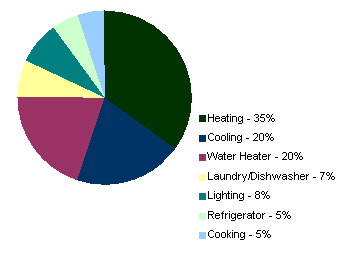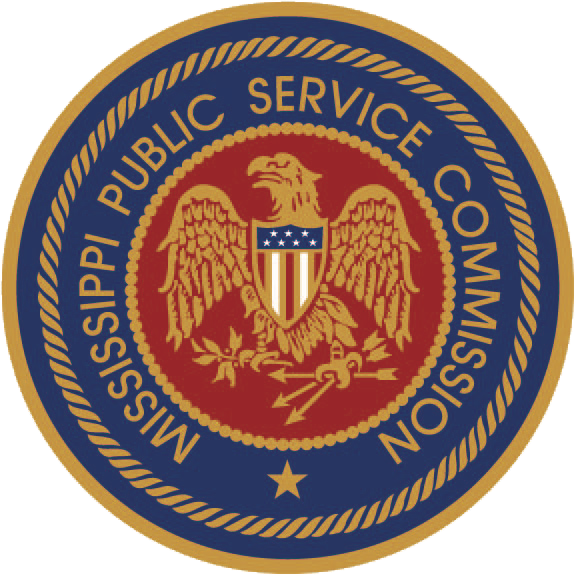Do You Need Help Paying for Your Telephone Bill?
To see if you qualify for financial assistance with your telephone bill payments, click here and then fill out the Lifeline/Linkup Application.
Track Your Energy Costs with a Free Home Energy Audit
An energy audit will show you which areas of your home use the most energy and help you decide the most effective way to reduce energy costs. You can conduct a simple audit yourself, contact your local utility, or call an independent energy auditor for a more comprehensive examination. Check your home's insulation levels, and check for open fireplace dampers. Look for holes or cracks around doors, light and plumbing fixtures, and other places where air may leak into or out of your home. Make sure your appliances and heating and cooling systems are properly maintained, and study your family's lighting needs and use patterns, paying special attention to high-use areas.
By completing TVA’s online energy e-Valuation, TVA will send you a FREE energy conservation kit filled with items to help you save energy and reduce your electric bill. The energy conservation kit includes two compact fluorescent light bulbs, outlet and light switch gaskets, filter whistle, two faucet aerators, hot water temperature gauge, home thermometer, and “How to Save” brochure. You’ll also receive a customized energy report to help you understand where your home is wasting energy - and how you can fix those expensive leaks before winter gets here. This offer is open to residents of the Tennessee Valley served by TVA and local distributors of TVA power. Complete the evaluation and you will receive your kit in approximately 4-6 weeks. Limit one kit per household. A mail-in home e-Valuation can also be ordered at TVA’s website:
https://energyright.com/residential/services/home-energy-evaluation/
ENERGYsmart Library is your online source for information about energy topics and technologies to learn more about the energy used in your home.
Energy-saving tips for kids - One of the best ways to promote energy efficiency is to get kids involved. At TVA’s new Web site just for kids, they can find out what to do at home and at school to help reduce the consumption of electricity.
Ever Wonder Where All Your Energy Goes?
This chart breaks down the energy dollar for a typical, all-electric household.

Energy Savings Tips
- Caulk and weatherstrip around windows and doors to stop air leaks
- Seal gaps in floors and walls around pipes and electrical wiring
- Change air filters monthly
- Replace incandescent bulbs with compact fluorescents – they use 75% less energy and last 10 times longer
- Install aerating, low-flow faucets and showerheads
- Fix any leaky faucets – one drop per second can add up to 165 gallons a month
- Tune-up your heating and cooling system annually to keep it running as efficiently as possible
- Have your ductwork inspected and repair any leaks
- Add insulation to your attic, crawl space and any accessible exterior walls
- Wrap your water heater with insulation or install an insulating blanket
- Use power strips for home electronics and turn off power strips when equipment is not in use
- Perform a do-it-yourself home energy audit.
- Reduce hot water use by taking shorter showers and using cold water for the rinse cycle in your washer
- Turn off lights, televisions and other appliances when not in use
- Use the microwave when possible – it cooks faster and doesn’t create as much heat as a stove burner
- Air-dry dishes instead of using the dishwasher’s heat drying option
- Run your dishwasher and clothes washer only when full
- Match the size of your pot or pan to the size of the burner
- Make sure your dryer’s outside vent is clear and clean the lint filter after every load
- Keep all windows and doors located near your thermostat closed tightly
- Keep heat sources such as lamps and appliances away from your thermostat
- Consider replacing your older model refrigerator, especially if it's over 10 years old, with an ENERGY STAR refrigerator
- Install foam gaskets behind electric-outlet and switch-plate covers
- Defrost frozen food in the refrigerator before cooking
- Keep your outside air unit clean and clear of debris or weeds
- Use low-watt bulbs where lighting is not critical
- Take the dollar bill test. Close your refrigerator door on a dollar bill and then try to pull it out. If the dollar comes out easily you may need new seals or a new refrigerator.
- Plan what you need inside the refrigerator before you open the door.
- Set your fridge at 40 degrees.
- Let food cool before putting it in the refrigerator. Hot foods will raise the temperature in the fridge and make it work harder.
- Wash full loads of clothes and use cold water when possible.
- Don’t overload the dryer.
- Dry one load of clothes immediately after another to minimize heat loss
- Clean the dryer lint filter before each load.
- Don’t run the dishwasher unless it’s completely full.
- Use the oven light to check on progress when cooking or baking
- Hang on to appliance manuals so you can refer to them for care information and possible energy-saving tips
(Compliments of US Department of Energy)
